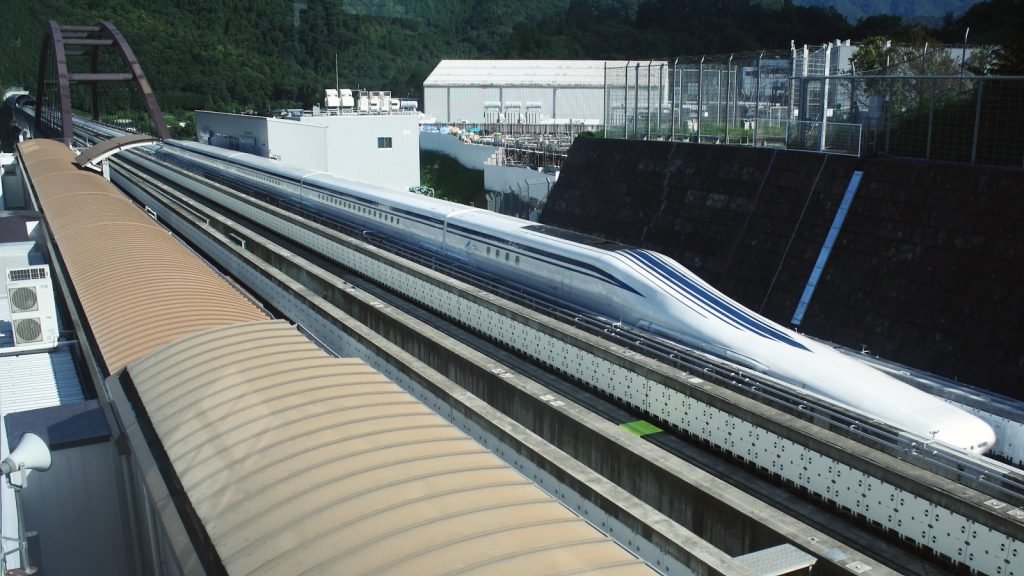The maglev is a type of train that uses electromagnetism to levitate above rails, eliminating friction. But how does it work? Let’s find out in this post.
Maglev principle operation
The maglev train floats above rails, eliminating friction between wheels and surface, remaining only the friction between the train and air. This is the reason maglev reaches impressive speeds. On rails, there are coils that produce a magnetic field when receiving electric current.
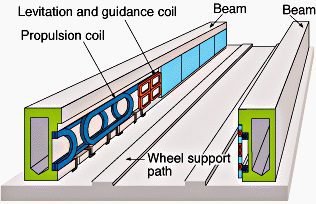
Below the train, there are magnets or electromagnets (coils with a ferromagnetic core, which produce a magnetic field when receiving electric current). As equal poles repel each other, the train floats from 1 to 10 cm above the tracks. The rail’s coils receive alternate current, so the poles change constantly. The forces of attraction and repulsion of magnetic poles make the train move.

Types of levitation
Electromagnetic suspension (EMS)
In this system, the train has guidance electromagnets to create an attractive force, keeping the train in right position. The support electromagnets create an attractive force in opposition to gravity to keep the train levitating. Electromagnets are supplied by maglev’s battery.
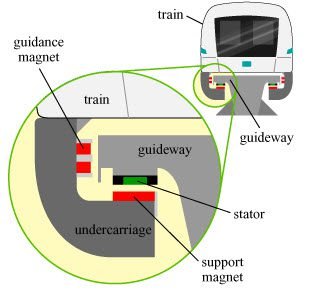
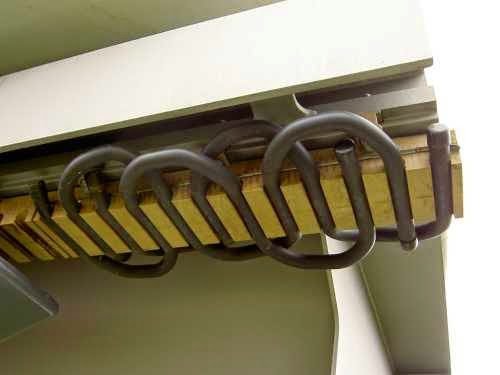
At high speeds, EMS becomes unstable and it’s difficult to keep the airgap between support electromagnets and the rails. It’s necessary a complex feedback control system to control current in electromagnets, keep the airgap and prevent the train to fall on the rails. This technology is implemented in Transrapid maglev, in Germany.
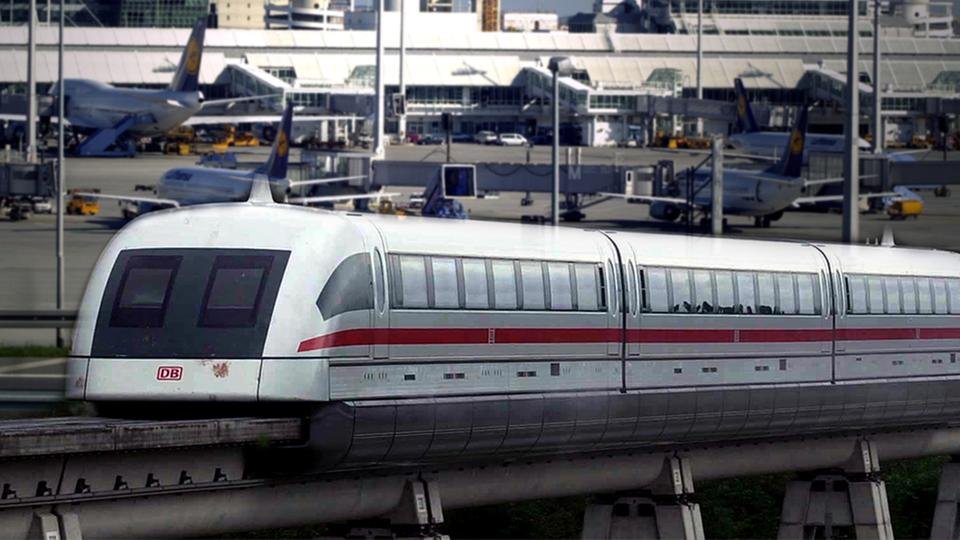
Electrodynamic suspension (EDS)
In this levitation system, the train is lifted by superconductors magnets, and electromagnets on the rails, they create a repulsive force between themselves.
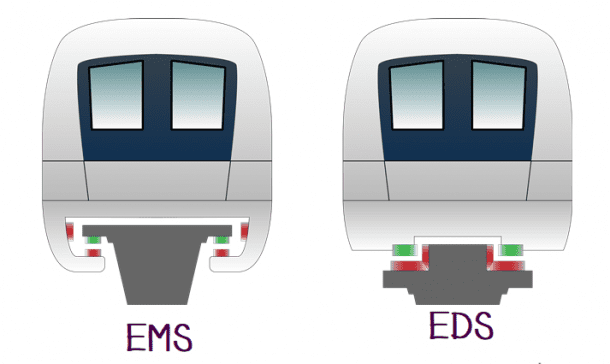
I already wrote a post about superconductors, click on the button below to access it.

The EDS is much more stable than EMS at high speed. However, it’s not possible to lift when stopped. Because of that, maglev with EDS has wheels and traditional propulsion to give an initial start. When the speed reaches 100 km/h, train’s superconductor magnets induce currents in the rail’s coils. With induced current, coils emit magnetic fields to guide and lift the train.
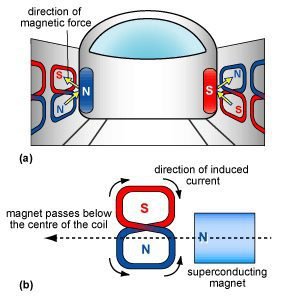
Propulsion coils are supplied by three-phase alternate current from substations. For using superconductors, EDS can still operate for a time in case the power is down, while EMS stops immediately. EDS is much more complex and expensive, one of the reasons is the cryogenic system to cool down superconductor magnets. In addition to that, this system generates a stronger magnetic field, which may not be good for people with pacemakers.
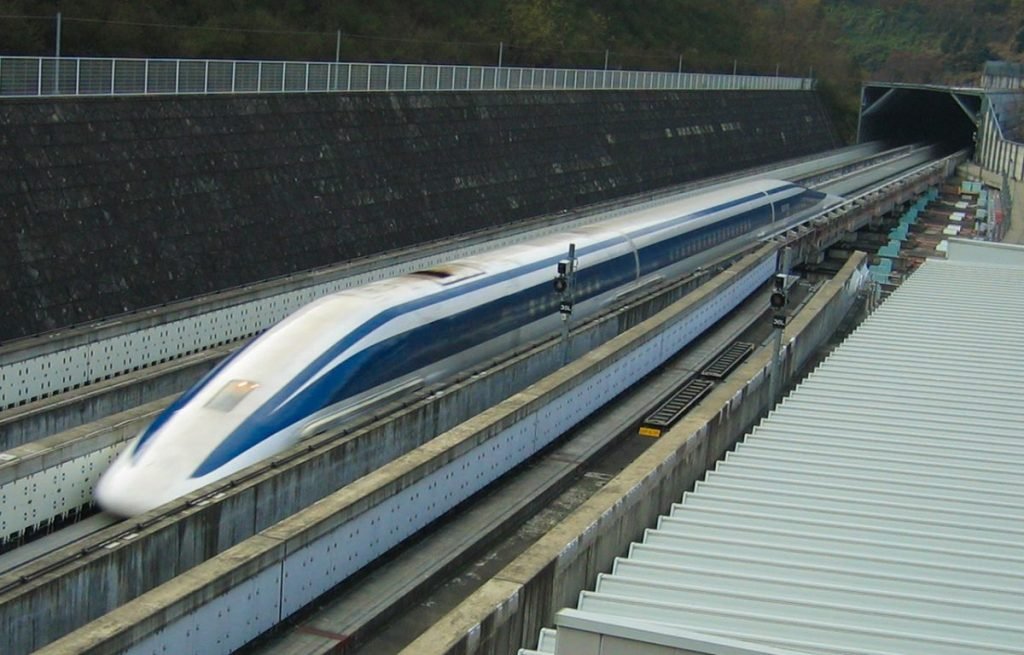
Indutrack
It’s a variation of EDS, the train has permanent magnets at room temperature made of neodymium-iron-boron alloy. These magnets are arranged in a Halbach array, making a side have a stronger magnetic field and on the other side, field lines cancel each other.

On rails, levitation circuits receive induced current to form magnetic fields.

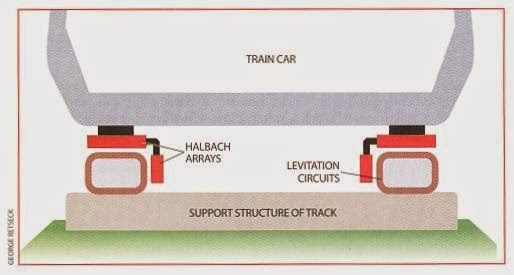
Which is the fastest maglev?
According to maglev.net, the fastest train currently is the JR-Maglev L0-Series, with a maximum speed of 603 km/h (505 km/h with passengers). Introduced in 2013 by Central Japan Railway Company. The record was obtained in test line Yamanashi, in 2015.
